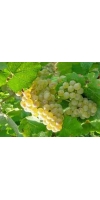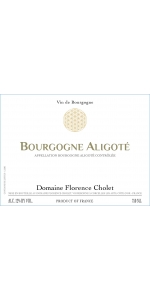Aligote

Aligote is a white grape that is used to produce white wine varietals. These are often used to produce white wine blends in Burgundy called Cremant de Bourgogne. The region uses nearly 15% of Chardonnay grapes to blend with Aligote to create blended white wines. Because Aligote adds acidity, it is often blended with Sacy. In Burgundy Aligote is often planted in the poorer vineyards at the bottom and the tops of the vineyard sites because land is often lost to other prestigious grapes in Burgundy. Aligote can tolerate the cold and ripens quite early. The wines that are produced using Aligote grapes can be consumed quite young and are very high in acidity. The aroma of wines made with Aligote grapes feature elements of lemons and apples. In the village of Bouzeron the best examples of Aligote are grown and represent the best examples in the entire region. Aligote is the second most popular grape variety in Burgundy with Chardonnay at the top of the list. The vines used to be blended with Chardonnay, but have since been separated. Aligote is found in the Rhone Valley and in the Communes of the Alpes-de-Haute-Provence as well as parts of Eastern Europe.
Full, well-balanced, mineral, with a hint of flint aromas. Lemon and lime flavors.
The parcels are located in Puligny Montrachet and Pommard.
- back
Selected Options
Grape Types
Categories
Pricing
Countries
Regions
Grape Types
Wineries
Organic/Free Shipping
Matthews Winery Columbia Valley Cuvee is made from 65% Merlot, 27% Cabernet Franc, 8% Malbec.
The 2021 Columbia Valley Cuvée sparkles with purple and deep garnet in the glass. Meadow flowers, fresh red berry, black plum, and cocoa powder aromas exhilarate leading to flavors of morello cherry liqueur, cardamom, mountain blackberry, and licorice snaps. This merlot-dominant blend is plush and weighty on the palate with powdery tannins. Dark stone fruits and dusty minerality coat the palate for a long, seamless finish.
Reviews:
A handsome blend, structured and polished, with expressive black cherry flavors accented by tarragon, mocha espresso and toasty spices that sail toward refined tannins. Merlot, Cabernet Franc and Malbec. Drink now through 2031.
-Wine Spectator 93 Points
This Merlot-based blend is a part of the Matthews tradition. Wildly fruity aromatics with whole berries, destemmed aromas driven by red berries, mountain blueberries, and a touch of green peppercorn and mocha dust. A streak of graphite underlines red berries, early season blackberries and a savoury herbal character that mingles complexity with fresh ripe fruits.
-Decanter 93 Points
Ottella Lugana DOC Le Creete is made from 100% Trebbiano di Lugana (same as Verdicchio)
The grapes for this wine come from the estate vineyards in San Benedetto di Lugana.
Golden, warm, intense straw yellow. Exotic notes of pineapple and grapefruit with delicate minerality.
Finesse yet a strong character. Rich and well balanced, firm, mineral wine with a superb pulp.
Pairs best with sea or lake fish to bring out its outstanding features; goes well with white meat and soup, and has quite a surprising affinity with full-flavored and blue cheeses.





